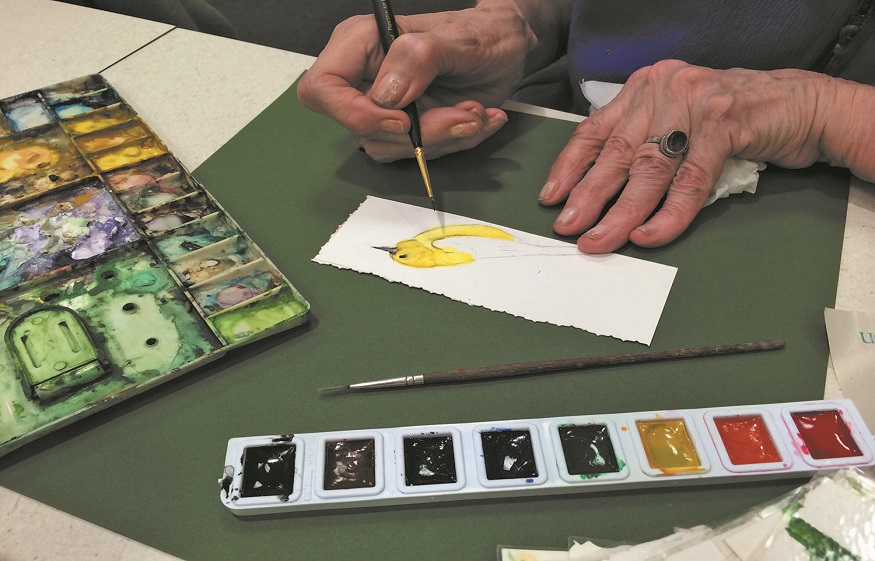Four Therapeutic Benefits of Making Art
META TITLE
The Healing Power of Art
META DESCRIPTION
Most of us have developed new hobbies during lockdowns. Many people are doing arts and crafts to keep themselves entertained while quarantining at home. While art is often seen as just another hobby, it is actually more than that. Art is a form of therapy, and here are some of its health benefits.
We live in an extremely fast-paced world. Most of us are glued to our laptops and smartphones. We try to survive in this competitive biosphere by working and studying non-stop that more often than not, we forget to take a break.
On top of this, the COVID-19 pandemic has made our lives even more challenging. Fears of contracting a deadly virus have instigated overwhelming stress among individuals around the world. This led to a spike in mental health problems globally, particularly anxiety and depression.
Amid these trying times, many people turned to hobbies like cooking and making art as a form of escape. The demand for arts and craft supplies surged globally as people entered self-isolation. Additionally, the number of articles, blog posts, and tutorial videos on making art posted online increased as families try to entertain their children amid homeschooling.
Aside from entertainment purposes, art has also been used to treat several cognitive disorders. Many psychologists are turning to art therapy to help patients with mental health problems develop self-awareness, explore their emotions, and cope with stress.
Fortunately, you don’t need to enroll in art therapy sessions to reap the mental health benefits of creating art. Just by immersing yourself in arts and crafts, you can experience the following improvements in your mental and emotional wellness:
1. Art helps you relieve stress.
According to Stanford University research, an average person has approximately 60,000 thoughts per day, of which 90% are repetitive. This mental noise can become too overwhelming, inducing unnecessary stress.
Making art through painting, sculpting, coloring, and knitting can provide you that needed distraction. It allows your brain to take a break from your usual thoughts, lowering your stress levels, and improving your mood.
Several scientific studies have proven this claim. Researchers recently found that browsing through an art gallery, whether physical or digital, lowers the production of the stress hormone cortisol. Instead, it increases the concentration of the pleasure hormone dopamine, making you feel happier and more relaxed.
Another recent study conducted among patients with post-traumatic stress disorder found that coloring mandalas daily reduced their symptoms for anxiety significantly. Meanwhile, separate research revealed that art making lowered the signs of stress and depression among university students.
2. It can boost your confidence and self-esteem.
Starting an art project can be extremely exciting, but finishing it can feel even more rewarding. Displaying your latest work of art or your kids’ artworks can make a powerful difference in improving confidence and self-esteem. In fact, one study done by Drexel’s College of Nursing and Health Professions showed that a 45-minute art-making session is already enough to increase a person’s self-efficacy, making them feel more confident, accomplished, and capable of achieving any task.
Don’t hesitate to hang up your painting on the wall or stick your kid’s art project on your refrigerator. You may want to use sticky dots or double-sided tapes to keep the artworks sturdy without damaging the surface.
3. Art encourages critical thinking.
Making art, regardless of how simple and complicated it is, involves a creative process that urges you to think outside of the box. This stimulates your brain to grow new neurons and encourages both of its hemispheres to communicate well with each other.
Several teachers have used art to instill creative and critical thinking among students. Education experts claim that art-making encourages students to “observe the world” from different angles and analyze their meanings. This process of observation is known to be the core foundation of critical thinking as they mature.
On top of this, many researchers have found that art education results in higher test scores and graduation rates among young students. Such a trend has led more institutions to incorporate art classes into their curriculum.
4. It helps you focus and be more productive at work.
If you run or lead a business, you might want to consider investing in artworks for your workplace. Many offices across the globe are incorporating art into their interiors. This comes as several studies have shown that embracing art in the workplace can boost productivity and focus among employees. Aside from stimulating creativity, staring at artworks allows workers to refresh their minds and re-focus. This helps reduce fatigue, stress, and eye strain in the long run.
Hang up some innovative artworks in common areas or within sight’s reach. Conduct some art-making sessions during townhalls or team building sessions. Allow your workers to bring their art projects or decorate their workstation as they please.
Art isn’t just a hobby; it’s a form of therapy. You don’t have to be an art expert to reap the psychological benefits of art. Simple activities like drawing, coloring, or knitting can already have significant impacts on your personal growth and emotional well-being for the long term.

